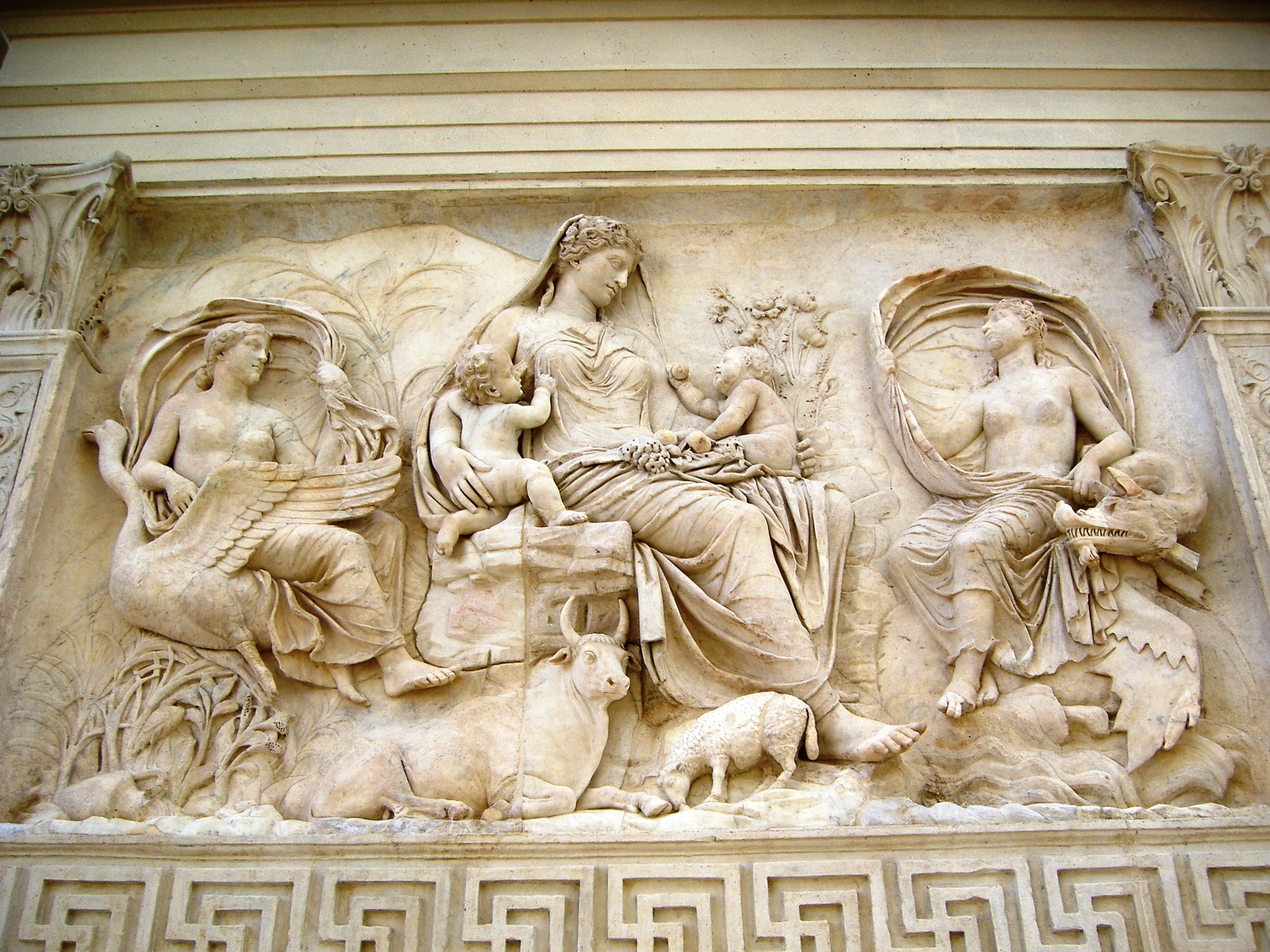- Art of biodiversity (some vaguely agricultural).
- Genebank for sturgeon. What the fish?
- Aromatic Green Dwarf. It’s a coconut.
- For the first half of his life, Gregorio Huanuco farmed to a rhythm that dictated the survival of his grandparents and ancestors for thousands of years.
- Fall foods.
- Camels have a hub.
- Genetic GPS.
- Taiwan pushes farm tours.
- The 100-yard diet.
Agrobiodiversity at the Ara Pacis
A sunday morning wander around the area surrounding the Piazza di Spagna ended with lunch at ‘Gusto and then our first chance to see the Ara Pacis, the Altar of Augustan Peace, in its fancy modernist cocoon. There is some controversy about the meaning of the left scene on the East wall — the so-called Tellus panel:
But there’s no doubting that it is a marvellous hymn to the bounty of agricultural biodiversity. You can see a cow and a sheep. wheat and poppies, grapes and pomegranates. Oh, and a sea serpent. No wonder one of the more solid interpretations identify this lady as Mother Earth.
More details here.
Nibbles: Yeast, Weeds, Bioprospecting, Iraq, Pine wilt, Vietnam, GM, GM, Insects, Bees, Sheep, Fowl
- Boffins to brew Jurassic Park beer.
- Boffins fingerprint weeds.
- Boffins scour arctic for antifreeze proteins.
- Boffins to reclaim Garden of Eden.
- Boffins fight to save pines in Europe.
- Boffins improve production of rice and fruits in Mekong Delta.
- Boffins to spend $US3.5billion on GM in China.
- Boffin “disgraces himself”.
- Boffin says insects are agrobiodiversity too.
- Boffin wants you to plant sunflowers and count bees. Other boffins dig up evidence of bliblical beekeeping.
- Boffins find endogenous retroviruses in sheep different to ones in wild relatives. Via.
- Boffins kill beautiful theory about pre-Columbian chickens with ugly fact.
Nibbles: Sheep, Media, Potato
- A sheep breed back from the brink in Tunisia.
- IIED paper on Biodiversity and the media. Thanks, Susanna.
- Lima to boast Potato Museum.
Cow Parade
There was an article in the local paper on Saturday which described how some of the exhibits at the recent Cow Parade in San Jose were a bit worse for wear and were being repaired. Well, I’d never heard of Cow Parade, but it sounds like fun. You can check out the entries for the San Jose event online. I just wish there was more phenotypic diversity on show, all the entries in the Wikipedia article look like basically the same breed.

